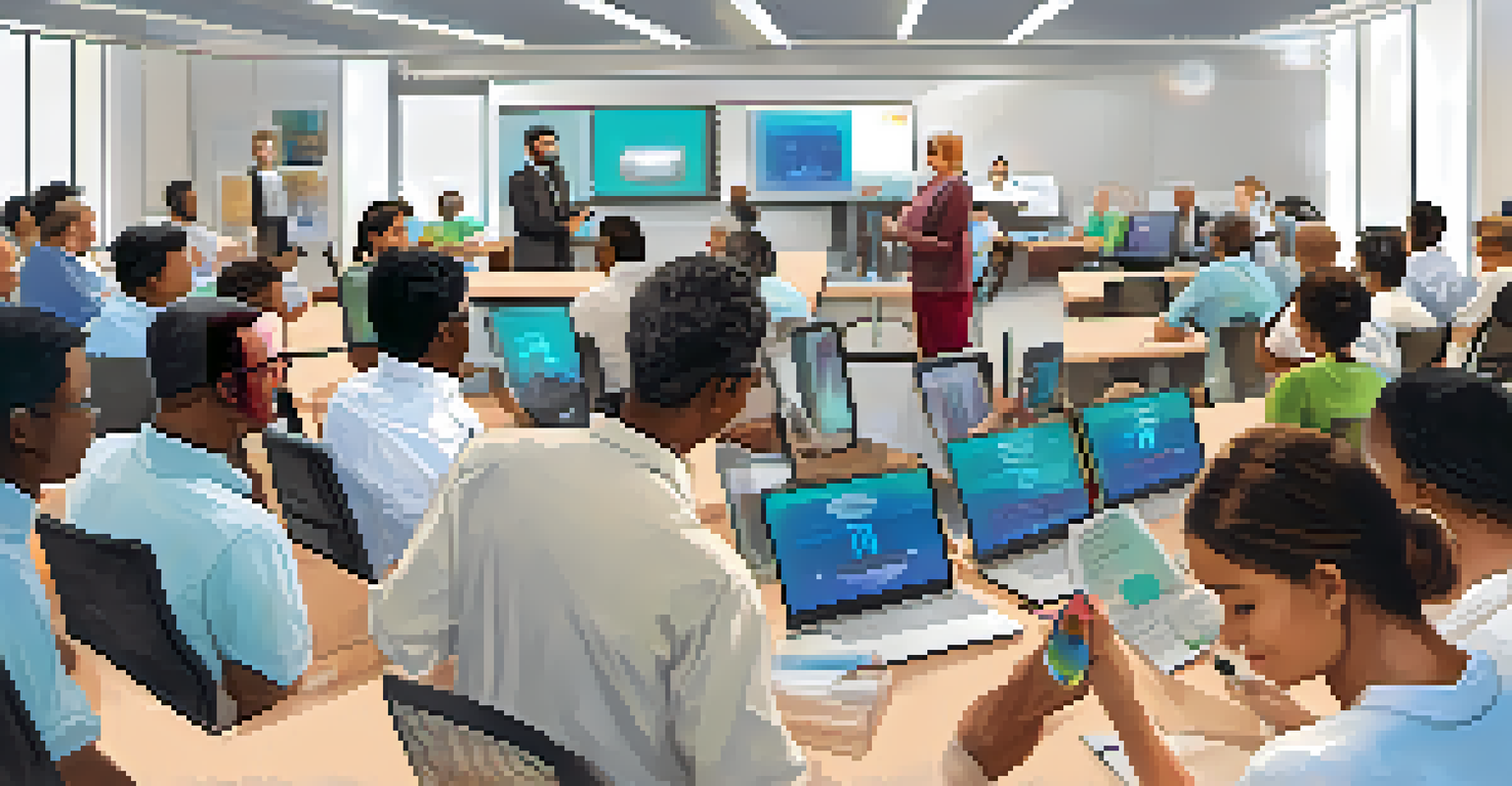The Role of Age Demographics in Shaping Employment Trends

Understanding Age Demographics in the Workforce
Age demographics refer to the distribution of various age groups within a population. In the context of the workforce, this means examining how different age groups—like millennials, Gen Z, and baby boomers—affect employment trends. Each age group brings unique skills, values, and expectations to the workplace, which shapes how companies hire and retain talent.
The greatest danger in times of turbulence is not the turbulence; it is to act with yesterday's logic.
For instance, millennials often prioritize flexibility and work-life balance, while baby boomers may emphasize job security and benefits. This variance can lead to differing approaches in recruitment strategies, with businesses needing to adapt to appeal to each demographic. Understanding these differences is crucial for employers looking to build a diverse and effective workforce.
Additionally, these age groups are influenced by various social and economic factors, such as technological advancements and shifting cultural values. As we delve deeper into how age demographics shape employment trends, it becomes clear that a one-size-fits-all approach simply doesn’t work.
The Impact of Aging Populations on Employment
As populations age, particularly in developed countries, the workforce demographic shifts significantly. For instance, by 2030, it's estimated that one in five Americans will be of retirement age, leading to a growing ratio of older workers in various industries. This trend can create both challenges and opportunities for businesses.

Older employees often possess valuable experience and knowledge, which can be instrumental in mentoring younger staff and shaping company culture. However, some industries may face a skills gap if younger workers are not adequately trained to fill roles left vacant by retiring employees. Hence, businesses must strategically plan for this transition to maintain productivity.
Diverse Age Groups Shape Workforce
Understanding the unique values and preferences of different age demographics is crucial for effective recruitment and retention strategies.
Moreover, the aging workforce requires companies to rethink their policies around retirement, training, and workplace ergonomics. Emphasizing inclusivity and adaptability will be key in harnessing the potential of older workers while ensuring a smooth transition for younger generations entering the job market.
Generational Differences in Work Preferences
Each generation has distinct preferences regarding work environments and job roles. For example, the rise of remote work has been particularly appealing to younger generations, who value flexibility and autonomy in their jobs. On the other hand, older generations may prefer traditional office settings, where in-person collaboration is the norm.
Diversity is not about how we differ. Diversity is about embracing one another's uniqueness.
This divergence in preferences can lead to conflicts in workplace culture, making it essential for companies to create a hybrid model that accommodates both sides. By offering options that cater to various preferences, businesses can foster a more inclusive environment that enhances employee satisfaction and productivity.
Additionally, understanding these generational differences in work preferences allows companies to tailor their employee engagement strategies effectively. For instance, offering mentorship programs can bridge the gap between younger and older employees, encouraging collaboration and knowledge sharing.
Technological Influences on Employment Across Ages
Technological advancements have profoundly affected employment trends, and different age demographics adapt to these changes in varied ways. Younger employees, having grown up with technology, often embrace digital tools quickly, while older workers may require additional training. This disparity can create challenges in team dynamics and productivity.
For instance, companies implementing new software may find that younger staff adapt seamlessly, while older employees may struggle initially. However, this doesn’t mean older workers can’t excel with the right support; training programs can help bridge the technological gap, enhancing overall team efficiency.
Aging Populations Present Challenges
As more employees reach retirement age, businesses must strategically plan to address skills gaps while leveraging the experience of older workers.
Furthermore, businesses that prioritize technology adoption and training may find themselves at a competitive advantage. By ensuring all age demographics are tech-savvy, companies can maximize their workforce's potential and streamline operations.
The Role of Education and Skills Development
Education and continuous skills development play a pivotal role in shaping employment trends across age demographics. As industries evolve, so too do the skills required to thrive in them, necessitating ongoing training for all workers. This is particularly true for older generations who may need to refresh their skills to keep pace with younger colleagues.
Employers who invest in training programs can foster a culture of learning and growth, benefiting both the organization and its employees. Offering workshops, online courses, and mentorship opportunities not only enhances skills but also boosts employee morale and retention.
Moreover, educational institutions can play a significant role by aligning their curricula with industry needs. By equipping students with relevant skills, they prepare them for the job market, ensuring that younger generations are ready to take on challenges as they enter the workforce.
The Importance of Diversity and Inclusion
Diversity and inclusion are increasingly crucial in today’s workforce, particularly concerning age demographics. A diverse workforce that includes various age groups fosters creativity and innovation, as different perspectives contribute to problem-solving and decision-making. Companies that embrace this diversity often see improved performance and employee satisfaction.
Moreover, fostering an inclusive environment helps bridge generational divides, allowing for mentorship and collaboration between younger and older employees. This not only enhances workplace culture but also ensures that knowledge and skills are shared across age groups.
Adaptability is Key for Future Trends
Organizations that prioritize flexibility, inclusivity, and continuous learning will be better positioned to navigate the evolving landscape of age demographics in the workforce.
As organizations strive to become more inclusive, they must actively seek to dismantle age-related biases. By recognizing the value that each age demographic brings, companies can create a more harmonious and productive workplace.
Looking Ahead: Future Employment Trends by Age
As we look to the future, it's essential to consider how age demographics will continue to shape employment trends. Emerging technologies, evolving work preferences, and changing economic landscapes will play significant roles in this transformation. Companies must stay agile and responsive to these changes to thrive in an increasingly diverse marketplace.
For example, as remote work becomes more normalized, businesses may find that younger generations seek even greater flexibility, while older workers may continue to prefer in-person environments. Understanding these dynamics will be crucial for employers aiming to attract and retain talent across all age demographics.

Ultimately, the key to navigating these trends lies in fostering a culture of adaptability and understanding. By prioritizing open communication and continuous learning, organizations can prepare themselves for the future of work, ensuring that all employees, regardless of age, feel valued and engaged.